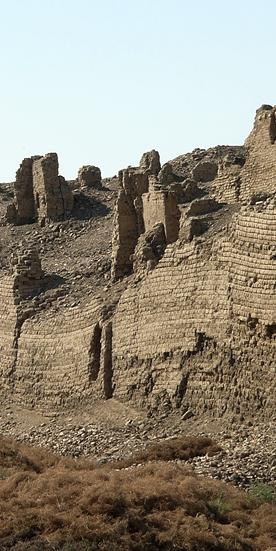Undulating Mud Brick Walls in Late Pharaonic Egypt

In a diachronic survey of a temple enclosure wall of the Late Period of ancient Egypt, the convex-concave curvature feature in construction first occurs in the 7th century AD. Although the monumental temples of this period have continuously been the subject of research, the mud brick outer walls have rarely been the focus of scientific investigation. In terms of architectural semantics, the discussion within Egyptology was focused largely on the hypothesis of a mythological allusion and the staging of an ancient landscape. In contrast, architectural research and static-structural aspects were far less central to investigations and usually treated only as examples to be examined based on selected findings.
For this reason, the undulating walls of Egypt will be studied in their entirety and a comparative study will be conducted in order to analyse their relation to one another. The primary objective of the work is to implement innovative combinations of methods in engineering and the humanities. Besides historical building research questions that will further illuminate the architecture and architectural history of the individual buildings, the central focus of the work will be the historical technical and construction aspects as well as cultural-historical classification and evaluation of the buildings. This interdisciplinary approach illustrates that the undulating enclosure walls of the late period are to be understood as structures bearing the cultural and technical knowledge of their time.
This project collaborates with the Egyptian Museum Georg Steindorff at the University of Leipzig and the German Archaeological Institute Kairo.
The disseration was successfully defended in November 2020.
Researcher: Max Beiersdorf
